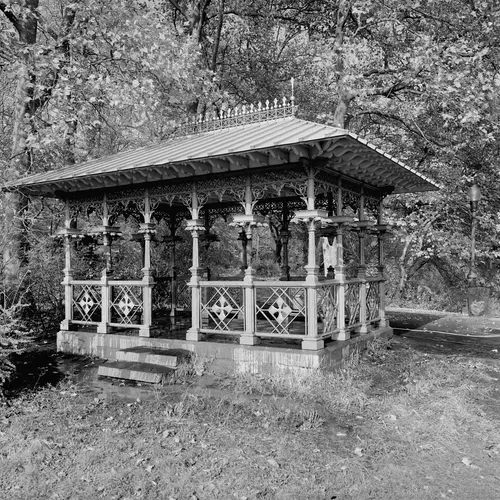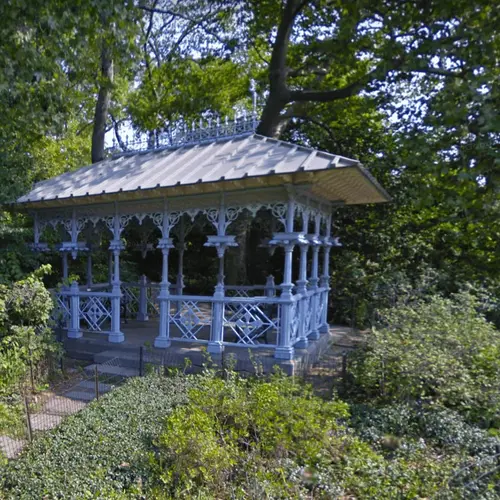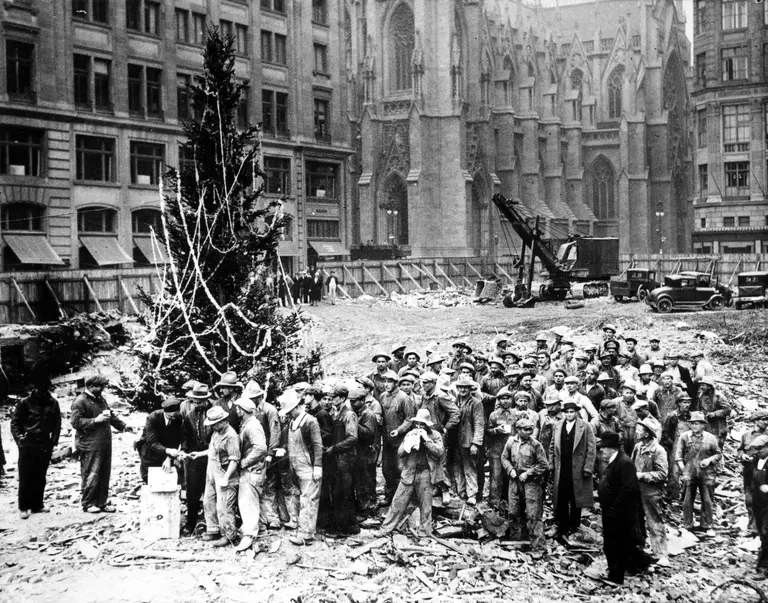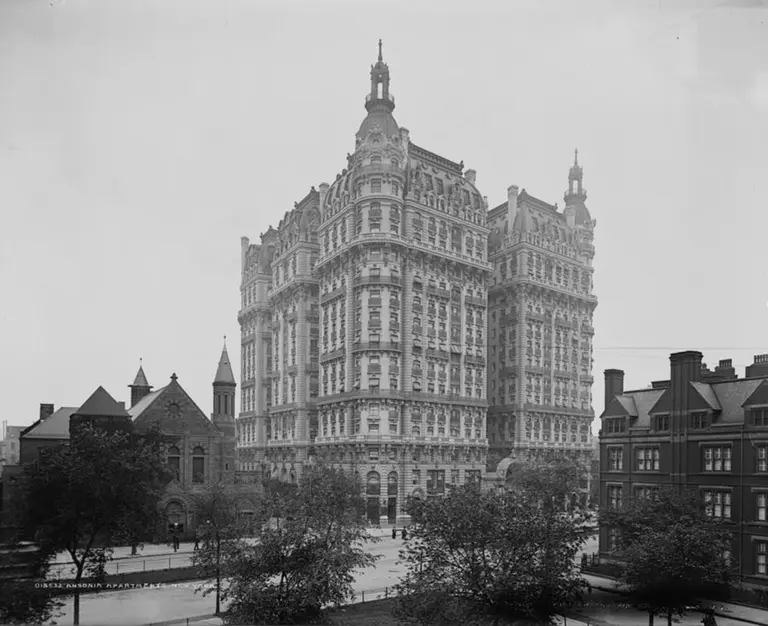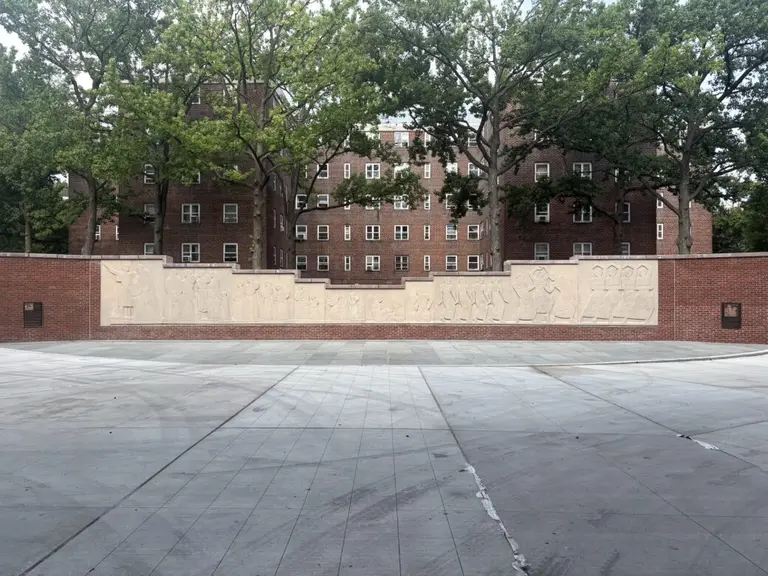Central Park’s Ladies Pavilion and the disappeared ice skating cottage
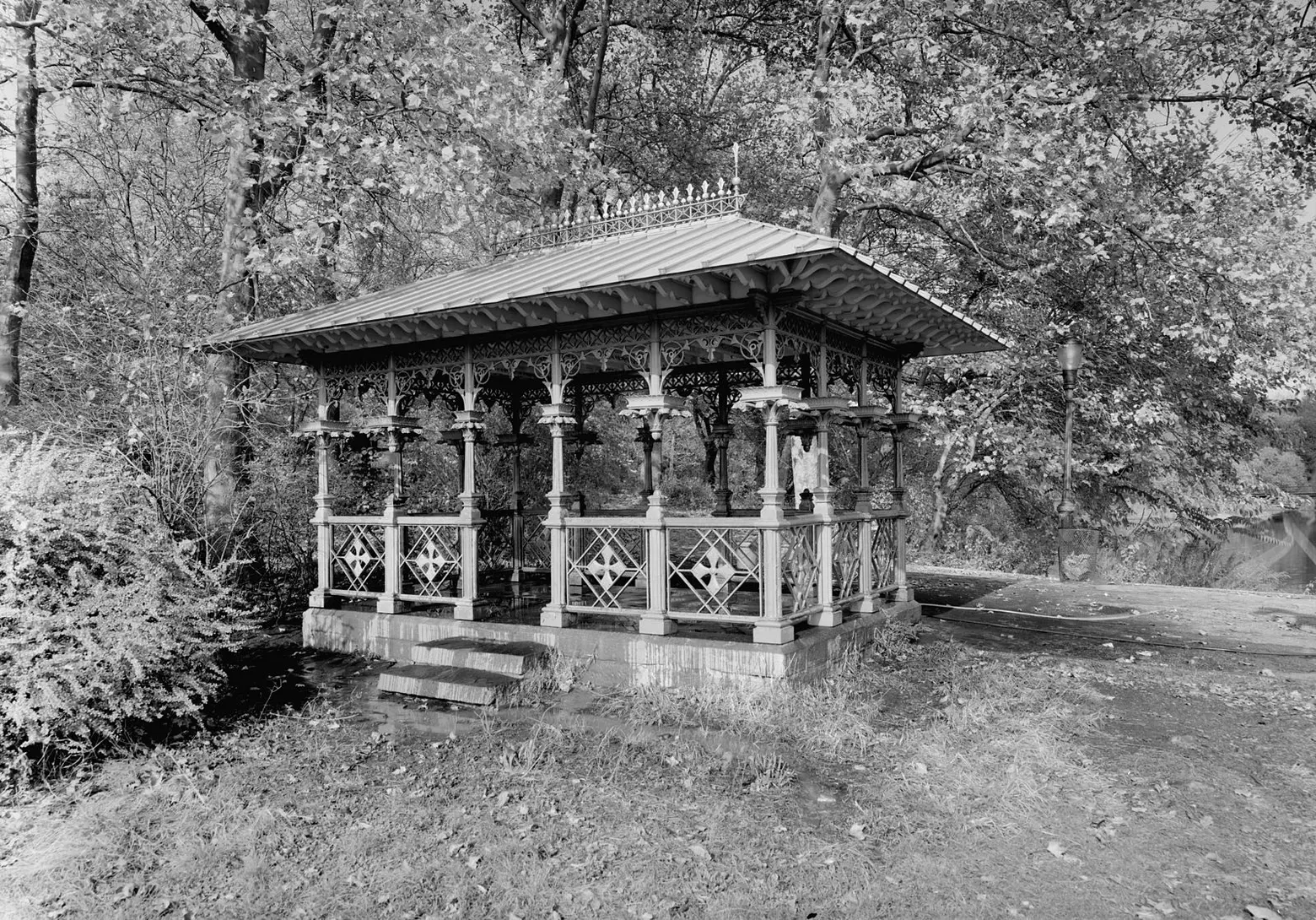
To get to Central Park’s Ladies Pavilion, it is necessary to go on, by New York City standards, a bonafide nature hike. Perched at the edge of the Lake, in a far corner of the Ramble, the cottage-like, open-air, Victorian-style structure was built in 1871 to serve as a “shelter for the horsecar passengers” near Columbus Circle, according to the New York Times.
 Google Street View of the Pavilion today
Google Street View of the Pavilion today
This gem of 19th century decorative design was built by British architect Jacob Wrey Mould, considered one of Central Park’s overlooked architects, his legacy fading into the shadow of Frederick Law Olmstead and Calvert Vaux’s. Originally, the space had no seating.
Built of Iacy ironwork, the gazebo of sorts was knocked down by vandals in the 1970s but soon rebuilt by the Lake, where it was likely moved from farther south in the early 1900s. While the Parks Department and non-profits handled some of the Pavilion’s first twentieth-century restorations, the private sector has more than once come to the aid of the Ladies Pavilion as its frame aged in more recent years. In 1973, a New Jersey iron monger, Hermann Wiemann, was commissioned to forge hundreds of pieces of trellis work to restore the recently vandalized space in a deal which is considered the first public-private partnerships in Central Park, according to The University of Vermont.
As for its feminine roots, those are more tied up to the Ladies Cottage, a long gone structure located on the same spot as the Ladies Pavilion thought to have been used by female ice skaters as a place to change their skates – an outdoor dressing room of the most modest degree. What happened to that structure is unknown. Today, the Ladies Pavilion is, unsurprisingly, very much coed and a popular location for weddings.
